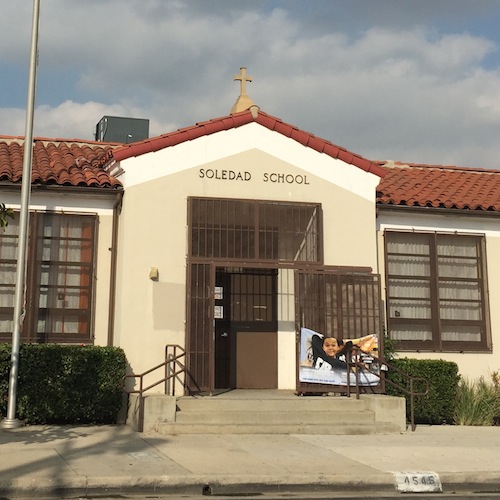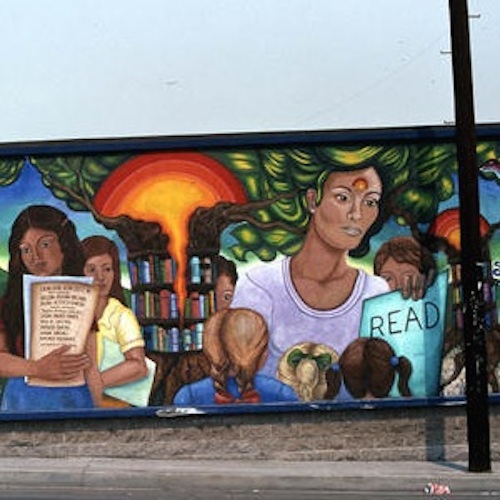
Magdalena Martinez-Huerta left Guadalajara, Mexico in the early 1940s, arriving in East Los Angeles with a dream: to bring the family’s food business to America.
She opened El Gallo Bakery in 1949 on E. Cesar Chavez Boulevard back when the street was called Brooklyn Avenue.
Huerta, now 89, moved back to Mexico in 1990, leaving the business to her son, Jesus Huerta.
For the bakery, Thanksgiving is the biggest day for business. Similar to the other estimated 66,000 supermarkets across the country, the days leading up to holiday are usually the pinnacle of sales for the fiscal year.
However, what may be more interesting is that Thanksgiving has been embraced by the people of the unincorporated area of East LA, a population that is 97% Hispanic, according to the 2012 Census.
"I have white friends who…were surprised at how we celebrate Thanksgiving. It is not commonly celebrated in Mexico where we’re from," Huerta said. "But [we] have adopted those traditions of celebrating."
The traditions start at 4 a.m. on the morning of Thanksgiving when a line for fresh pan de agua forms around the block.
Huerta said that pan de agua (also called bolillos or pan blanchito) is a type of dinner roll whose many names represent a fusion of Mexican and European baking.
According to Huerta, pan de agua's flexible flavor makes it a "bread that accommodates" and can be eaten at breakfast, lunch or dinner.
Huerta is not sure how it became a tradition to consume pan de agua, but the bakery has embraced the custom, firing up the ovens at 2 a.m.


"I see people who’ve met [each other] standing in line and every year they will meet up again," Huerta said. "Relationships have started through meeting...and standing in line and seeing each other."
Huerta estimates they sell more than 7,000 bags of a dozen rolls, each for $3.65.
Huerta attributes the freshness for its popularity.
"Some people like to burn themselves with the bread," Huerta said. "It just came out of the oven and they say, 'No I want it hotter'...That’s one of the reasons people get it here and line up one night before."
For Huerta, the secret to lasting success isn't in the sauce, but in the dough.

A
n oversized rooster is placed atop the Majestic Poultry building, facing downtown above a sign written in English, Spanish and Chinese script.
Ricardo Cuan, manager of Majestic Poultry, washed the blood off his hands before starting a tour of the facilities.
He started in a makeshift chicken coop, a sort of purgatory where the birds wait to be killed and de-feathered in the room next door. Cuan is of Chinese ethnicity but also speaks Spanish and English to employees along the tour. This seems fitting as his market is located on the border between the unincorporated area of East Los Angeles - a majority-Hispanic area - and Monterey Park, a majority-Asian city.
Cuan has been working in the fresh poultry industry for almost 20 years. His use of old-fashioned methods to deliver a simple product, freshly-killed meat, hasn’t changed — but the industry has. Increased competition, the growth of supermarkets and a younger generation that prefers eating out over cooking has been hurting business.
"[Before] more Asians got into the business, this was really booming,” Cuan said. “After that, the business just died out a little bit more because of the competition."
According to Public Matters' Mike Blockstein, almost all the cornerstores and small markets in East LA are struggling with the low prices of large retail corporations. Blockstein is principal of the organization which has been working with markets in East LA to provide more fresh food.
"Small stores run on razor thin profit margins," Blockstein said. "They don't have the buying power of larger retail stores."
However, the holidays are a brief respite. Every Thanksgiving, a consistent lot of customers place an order for a prepared turkey or chicken.
This year Cuan has 200 turkey pre-orders and expects to sell another 200 to walk-in customers.
A key demographic of their customer base is older Asians and Hispanics, the majority demographic of Monterey Park and East LA, respectively.
The median age of a person in Monterey Park is 41 years old, about 20 percent higher than the Los Angeles Metropolitan area’s median of 35.
However, as Cuan’s customers age out of the market, younger ones are turning elsewhere for their poultry - or simply eating out.
"People don’t want all the hard work to making the feast anymore" Cuan said. "When you go to a market like Costco or Safeway, you really don’t know how long [the meat] has been there in a cooler or freezer."
Cuan describes the market as being old-fashioned, of the days when people went to bakeries for bread, meat markets for meat which is the reason why Thanksgiving traditions are an integral part of keeping the doors open.
If the tradition to eat turkey goes, so does much of his business.





